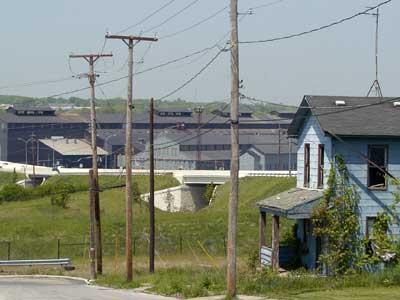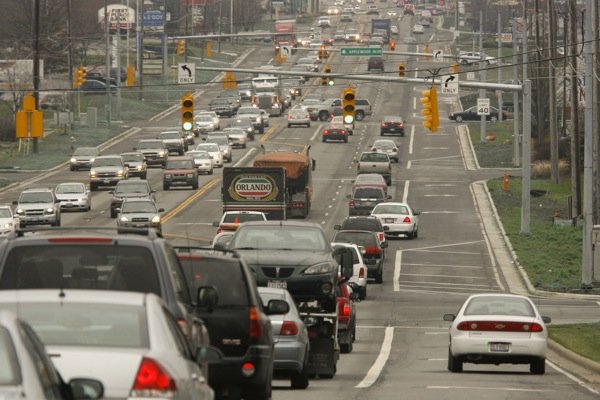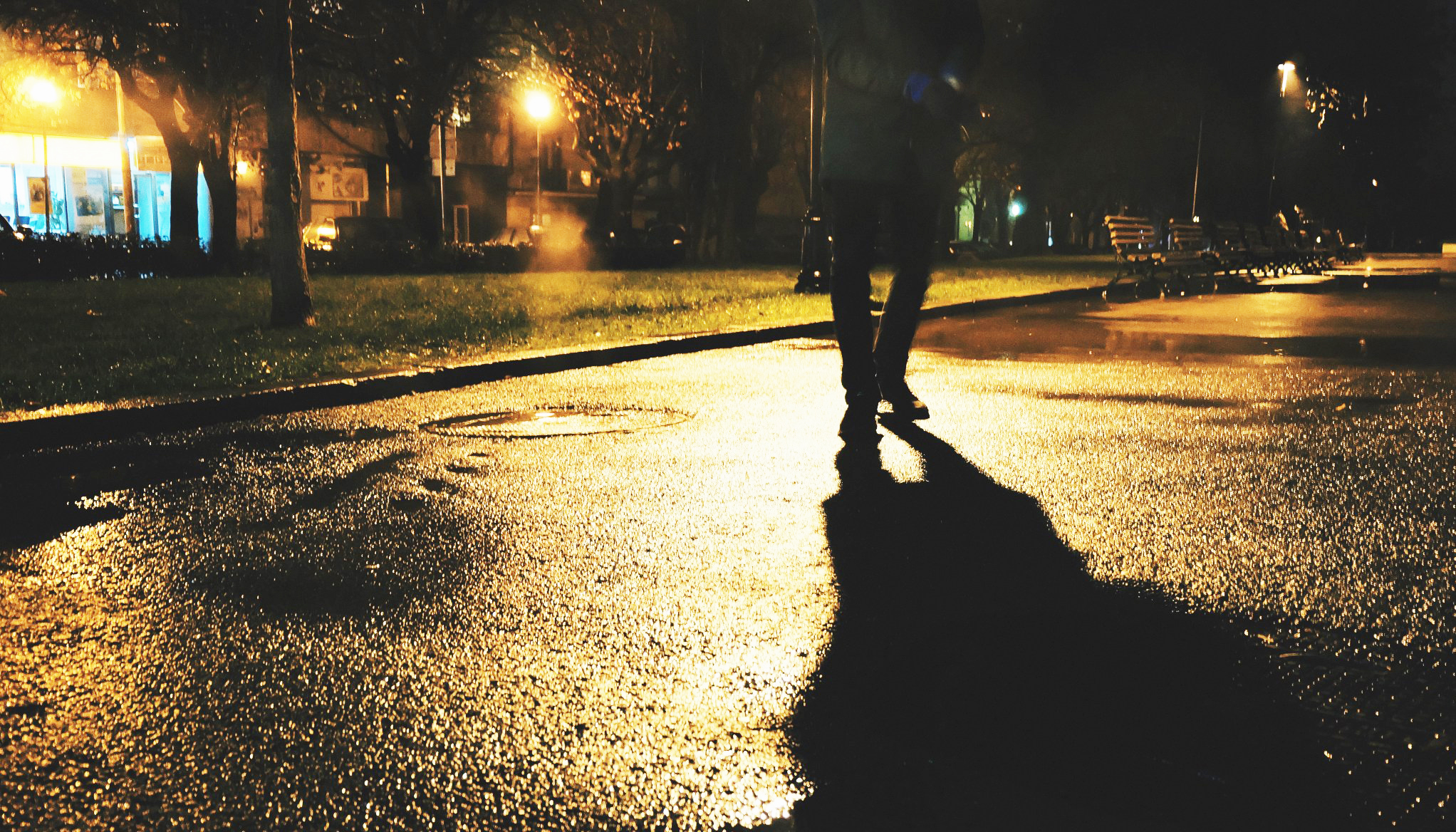Youngstown, Ohio has its share of problems.
Once a single-industry steel town, the rust belt poster child has seen its population dwindle from 115,000 residents to barely 67,000 over just three decades. For the better part of the last century, the city was known for its mafia activity, and shaking off the residue of government corruption and violence has been difficult. Its homicide rate -- driven upward by a not-yet-recovered economy -- puts the city in league with towns three times its size.

But undergirding all of these ills is the problem that might just be Youngstown’s biggest: its built infrastructure is simply to large for its current population.
The starkest example is its excess housing stock. At last count, demolition crews were slogging through some 3,300 vacant houses. But sewers, streets, even stoplights: all of these former amenities linger at a scale meant for the days when the mills were still turning the skies orange and filling the pockets of workers who, in turn, filled the gambling houses.
Now these physical amenities have become liabilities. A diminished tax base limits the city's ability to maintain its aging streets and sewers. Signals stop drivers on abandoned streets and force them to burn fuel while waiting for the passing of phantom traffic.
Almost a decade ago, Youngstown made headlines by acknowledging this problem. No longer would the city plan for growth, the way every American city had in the history of urban planning. Youngstown was planning to shrink -- but to shrink smart. The plan was known as Youngstown 2010.
The city would start by tearing down the abandoned houses that depressed neighboring property values and acted as magnets for crime. Their hope was that some neighborhoods could be depopulated and that the city might even be able to tear out some underutilized streets, in order to dispense with sending around the plows and the patch crews. This revolutionary "right-sizing" concept has since been embraced by cities like Detroit and Flint, Michigan.
The plan was called Youngstown 2010, but now -- in 2011 -- the city of Youngstown is just getting around to removing its first street. Part of the problem is that the state, regional and national policy framework is still oriented for growth. After all, Youngstown can't go to the Ohio Department of Transportation and ask for money to tear out roads -- yet. ODOT's money is for building roads, and that fuels a dynamic that threatens what progress has made in Youngstown.
Unlike Detroit and Cleveland, Youngstown's population loss doesn't stop at its borders; the overall Youngstown-Warren region lost 6 percent of its population in the last decade alone. As yet, however, there is no regional plan for right-sizing. In fact, the region continues with a campaign of widening roads in the ever-more-distant suburbs, while allowing its urban infrastructure to crumble.
As a result, Youngstown must contend not only with the staggering blow dealt by de-industrialization but also with continued government-subsidized sprawl. Commissioners in Mahoning County will soon begin the widening of the rapidly commercializing Western Reserve Road in the quasi-rural outskirts of Boardman and Canfield. The project will widen the road by two feet on each side and add a shoulder "for safety reasons."
The timing of all of this is suspect, says Phil Kidd, a community activist who represents the region's increasingly vocal young professional population. Kidd, who blogs for the website Defend Youngstown and works for the Mahoning Valley Organizing Collaborative, says that the safety concerns just mask the real motivation for the widening: encouraging the type of sprawling development that has been drawing residents farther and farther from the city for some time.

"They’re using the argument that it’s more or less a safety issue; they’re not trying to make extra lanes or anything," he said. "This is how it starts. In another 10 years, it’ll be, 'let’s add a lane.'"
Observers like Kidd fear that Western Reserve is being set up to become like State Route 224, the region's most important commercial corridor, just a few miles closer to the city, in suburban Boardman Township.
Western Reserve recently snagged Rulli Brothers Italian Grocery store, a Youngstown institution, from a closer-set location. The store has been slowing migrating outward with the region's population for decades. A generation ago, it made its home near downtown; now it borders farmland, Kidd said.
State Route 224 in Boardman is not the type of road that planners or sustainability advocates would delight in seeing replicated. Traffic slogs down this commercial corridor at a snail's pace most times of day. The local paper, The Vindicator, described driving on the street as everything from "exasperating and near impossible to unbelievable and scary." (It just underwent widening.)
The entire six-mile commercial stretch of SR 244 lacks a foot of sidewalk space. So as much as a headache as it is to drive on, it's far worse for pedestrians. Furthermore, stormwater runoff from the acres of parking lots along this route have contributed to a persistent and costly flooding problem in Boardman Township.
Meanwhile, proponents of the Western Reserve Road widening have argued it would help protect motorists in the case that they have to dodge a deer or some other unexpected obstacle. But that is hardly the biggest safety concern on the region's roads. Youngstown, and even some of the inner-ring suburbs like Boardman and Austintown, are notorious for their potholes. The giant chasms cost the city thousands of dollars in reimbursement fees to motorists and have even been blamed for a number of deaths.
So how did Western Reserve rocket up the infrastructure priority list in the Youngstown area? Well, again, that's a matter of public policy in a state that continues to favor growth. Because Boardman and Canfield Townships are unincorporated, they won't have to pay a dime to widen Western Reserve. It's a county road -- that means the county picks up the bill. Many suburbs, including Boardman Township (population 37,000) benefit from remaining unincorporated, allowing them to foist many of their infrastructure costs onto the county.
The injustice of this whole arrangement is that the costs of widening the road will be shared by all residents of the county -- including the people who live in Youngstown. Youngstown's roads will go unmaintained, and the county will continue to draw money from central city residents and redistribute it into the suburbs and exurbs.
Meanwhile, back in the city, Youngstown activists struggle mightily against so many challenges. The city is making strides to redevelop its downtown and build a new economy around tech startups.
But without a support structure at the state, regional and federal level, will this promising plan for shrinkage be feasible? Or will Youngstown, and its larger region, continue building their way to decline?





